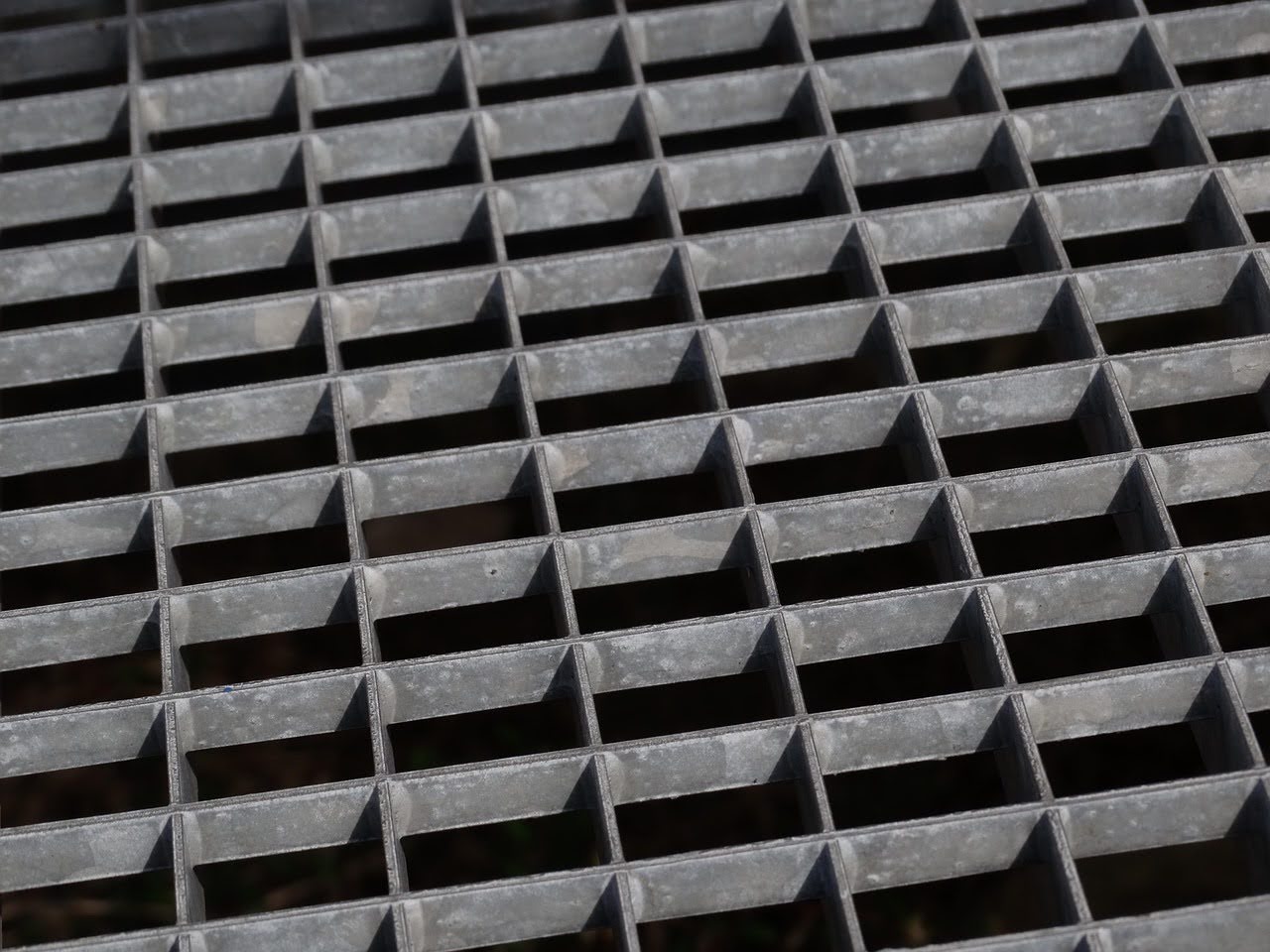Industrial flooring, walkways, and platforms are all familiar with the two most common grating material options: GRP ( Glass Reinforced Grating) and good old steel grating. But while the latter has long been the traditional choice, GRP has gained popularity for its lightweight and corrosion-resistant nature.
Despite steel's many qualities, GRP often outperforms it as the most sensible alternative when it comes to grating.
Then is GRP better? We’d say yes, but it really depends on what your project needs. So, let’s break it down.
GRP Grating
GRP grating is a Glass Reinforced Plastic grating that is a lightweight yet very durable material. The combination of glass fibres and resin creates a strong, rigid structure that is corrosion-resistant, non-conductive, and, very conveniently, low-maintenance. So, in all the places with high traffic, areas where safety is of utmost priority, the environments where the most durable, corrosion-free and anti-slip material is preferred, GRP grating panels can come in as the best alternative, as metal will rust and degrade.
GRP Grating Benefits
- Weight - GRP is much, much lighter than steel, which makes it way easier to transport and install. This property also saves money as fewer workers will have to carry and install the GRP.
- Safety - Again, because GRP is lighter, it’s safer to install, but the safety benefits don’t end there. GRP grating has a better anti-slip surface, so it’s much more suitable for applications across particular industries like the marine sector, where slips and trips are the number one hazard on the job.
- Corrosion Resistance - GRP is naturally corrosion-resistant, so any environment that involves water and chemical exposure will benefit from GRP.
- Low-Maintenance and Long Lifespan - Because of the corrosion resistance, GRP is inherently low-maintenance over the course of its life, which is also longer lasting than that of any steel alternative, especially in environments with harsh conditions.
- Electrical Conductivity - GRP is non-conductive to electricity and has low thermal conductivity, which is a major factor in the power and railway industries, where electrical and thermal insulation are vital.
Where to Use GRP Grating Systems
The top five applications of GRP grating include:
- Industrial walkaways and platforms: Factories, plants, and offshore rigs, where workers need strong, non-slip surfaces.
- Stair treads: Because lightweight, safe, and corrosion-resistant material is what makes these as safe as humanly possible.
- Drainage covers and trench grates: GRP mesh will allow water and liquids to pass through, and at the same time, it will support foot traffic.
- Chemical and water plants: Because harsh chemicals and moisture are not a threat to GRP grading systems.
- Marine environments: Docks, piers, and offshore platforms, where saltwater reigns supreme, can quickly corrode metal, but not GRP.
So, is GRP the winner? Maybe, but steel still has something to show:
Good Old Metal Grating
This is heavy-duty now. Steel grating is typically made from carbon steel, stainless steel, or even galvanised steel. It’s exceptionally strong and has an immense load-bearing capacity. It’s still best used for environments where high traffic and heavy equipment are the norm on a daily basis. And while it can be prone to corrosion if not properly coated or galvanised, it is fire-resistant, tough, and reliable for demanding applications, especially when structural integrity and safety are priorities.
Steel Grating Benefits
Exceptional Strength
Does your work require heavy loads and withstand high traffic? Then, steel grating might still be the answer for you, as it can support machinery, equipment, and constant foot traffic, all without ever breaking.
Fire Resistance
Steel can handle extreme temperatures without compromising its structural integrity. So, industries where heat, sparks, and potential fire hazards are a typical concern can benefit from steel grating.
Versatile and Customisable
One of its greatest advantages remains its flexibility in design. Steel grating is usually available in many different sizes and thicknesses and can be tailored to fit platforms, stairs, and drainage systems of almost any shape.
Where to Use Steel Grating
Anywhere strength and fire resistance are a must, so depending on the industry, you can trust steel grating for industrial walkways, factory floors, large platforms, manufacturing plants, warehouses, power stations, refineries, and areas near furnaces and boilers.
Here's a Breakdown of Both GRP vs Steel Grating
| Feature | Steel Grating | GRP Grating |
|---|---|---|
| Strength | Very High | High |
| Weight | Heavy | Lightweight |
| Corrosion Resistance | Needs galvanising | Naturally resistant |
| Fire Resistance | Highly resistant | Resistant |
| Maintenance | Can rust, needs coating | Low maintenance |
| Cost | Cheaper upfront but more expensive due to higher maintenance needs. | More expensive initially, but cheaper in the long term due to low maintenance needs. |
| Electrical Conductivity | Conductive | Non-conductive |
| Flexibility | Flexible design | Flexible design |
When to Choose GRP vs Steel Grating
The choice comes down to this: your environmental conditions, load requirements, and budget considerations. If your workplace is or resembles chemical plants, water treatment facilities, or marine settings, your choice absolutely is GRP grating, which will also cost you less in the long term, as steel will require a lot more maintenance in such settings.
If you're working with heavy loads and extreme temperatures in industrial walkways and manufacturing plants, then steel may be the right choice for you. The more demanding the environment is in terms of strength and long-term durability, the more steel is your best option.
Make the Right Choice with Lockinex
Yes, GRP has come up as a great alternative to steel, and in many cases, it is the better choice, but that is still highly dependent on your project. So, there's no one-size-fits-all solution, but with the right information, you can find the material best suited for the job.
And if still in doubt, you can always rely on our team to help you make the right choice. Simply contact us to explore the full range of solutions we can offer you, and get bespoke advice on your gratings.

